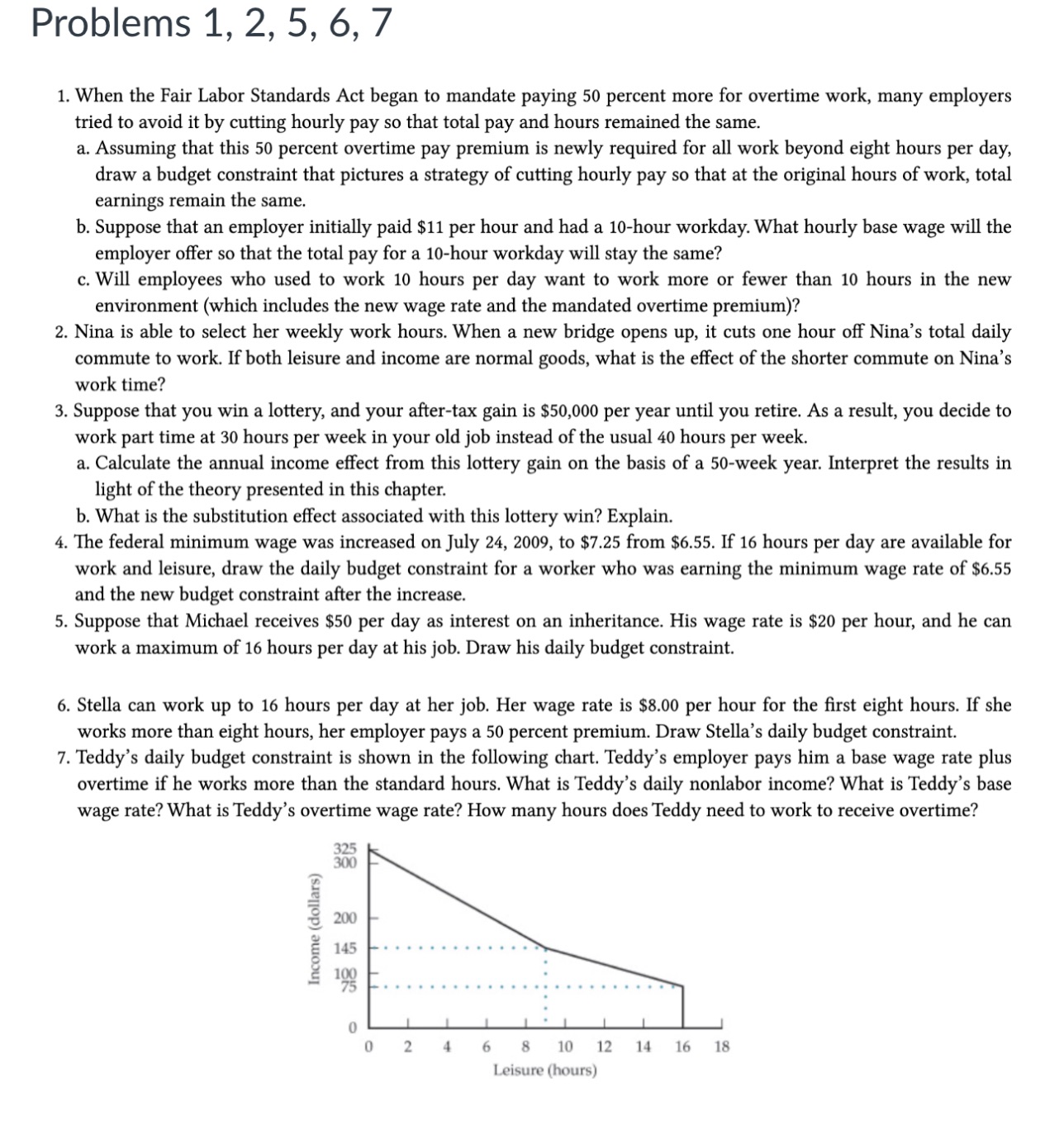Problems 1, 2, 5, 6, 7 1. When the Fair Labor Standards Act began to mandate paying 50 percent more for overtime work, many employers tried to avoid it by cutting hourly pay so that total pay and hours remained the same. a. Assuming that this 50 percent overtime pay premium is newly required for all work beyond eight hours per day, draw a budget constraint that pictures a strategy of cutting hourly pay so that at the original hours of work, total earnings remain the same. b. Suppose that an employer initially paid $11 per hour and had a 10-hour workday. What hourly base wage will the employer offer so that the total pay for a 10-hour workday will stay the same? c. Will employees who used to work 10 hours per day want to work more or fewer than 10 hours in the new environment (which includes the new wage rate and the mandated overtime premium)? . Nina is able to select her weekly work hours. When a new bridge opens up, it cuts one hour off Nina's total daily commute to work. If both leisure and income are normal goods, what is the effect of the shorter commute on Nina's work time? 3. Suppose that you win a lottery, and your after-tax gain is $50,000 per year until you retire. As a result, you decide to work part time at 30 hours per week in your old job instead of the usual 40 hours per week. a. Calculate the annual income effect from this lottery gain on the basis of a 50-week year. Interpret the results in light of the theory presented in this chapter. b. What is the substitution effect associated with this lottery win? Explain. 4. The federal minimum wage was increased on July 24, 2009, to $7.25 from $6.55. If 16 hours per day are available for work and leisure, draw the daily budget constraint for a worker who was earning the minimum wage rate of $6.55 and the new budget constraint after the increase. 5. Suppose that Michael receives $50 per day as interest on an inheritance. His wage rate is $20 per hour, and he can work a maximum of 16 hours per day at his job. Draw his daily budget constraint. b o . Stella can work up to 16 hours per day at her job. Her wage rate is $8.00 per hour for the first eight hours. If she works more than eight hours, her employer pays a 50 percent premium. Draw Stella's daily budget constraint. . Teddy's daily budget constraint is shown in the following chart. Teddy's employer pays him a base wage rate plus overtime if he works more than the standard hours. What is Teddy's daily nonlabor income? What is Teddy's base wage rate? What is Teddy's overtime wage rate? How many hours does Teddy need to work to receive overtime? ~ 325 300 200 145 100 75 Income (dollars) 0 2 1 6 8 10 12 14 16 18 Leisure (hours)







